Turks and Caicos Beachcombing & Seashells
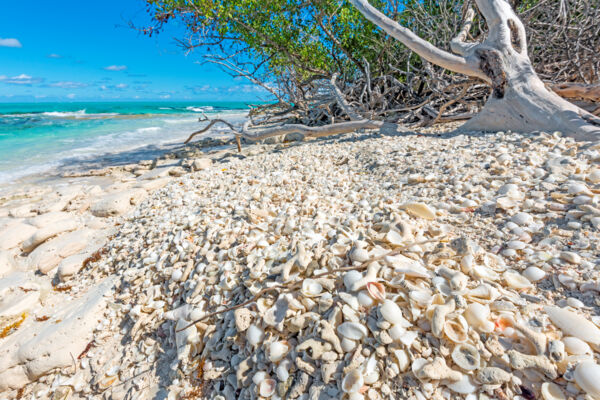
The Turks and Caicos Islands feature an extensive and pristine marine environment that’s teeming with vibrant reefs and marine life. As such, a tremendous variety of beautiful seashells can be found on the beaches and coastlines (our Seashell Identification Guide shows you many of the specimens you can find while beachcombing).
Unfortunately, government regulations and the remote locations of the best beachcombing sites restrict the shell finding possibilities, so the archipelago doesn’t excel as a destination for seashell collectors.
Protected Areas and Regulations
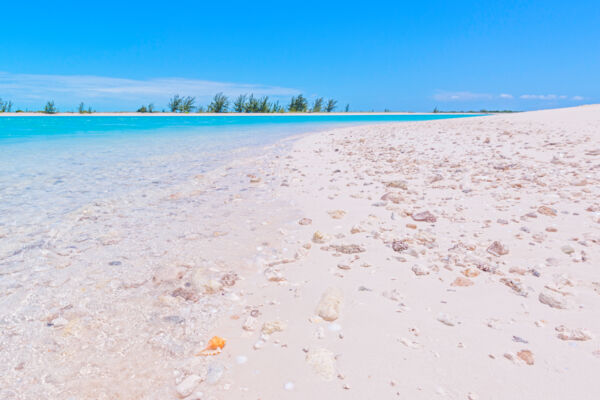
The Turks and Caicos Islands features quite a few marine national parks and nature reserves, and the removal of any natural or historical object from these areas is prohibited.
On Providenciales, many popular beaches are under protection. The beautiful coasts of Grace Bay Beach, Leeward Beach, the Bight Beach, and Smith’s Reef are in the Princess Alexandra National Park.
On Grand Turk, almost the entirety of the west coast, including Governor's Beach, the Cruise Center Beach, English Point, and Pillory Beach, are part of the Columbus Landfall National Park.
In addition to the protected areas, there are restrictions on the export of some types of marine items, which vary by species and season.
The truth is that taking a shell from the beach (that currently doesn’t support an animal, of course!) likely does infinitesimal damage to the environment. However, to protect against accidental and intentional removal of live animals, and damage to the reefs, (and of course so hermit crabs have a place to live!), seashell beachcombing is not legally supported in the Turks and Caicos.
Seashells Common to the Turks and Caicos
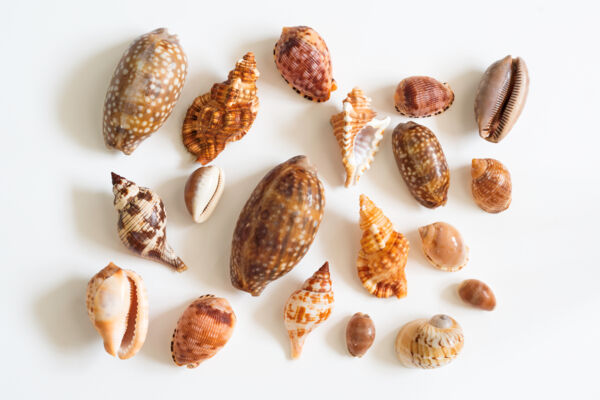
There’s a tremendous selection of seashells that can be found in the Turks and Caicos, and these include many of the tropical Atlantic species found throughout the Gulf of Mexico and the Caribbean
Our different coastlines and marine areas offer predictable finds. Bays and shallows tend to support conch. Beaches near the barrier reef often have cowries and tritons, and our extensive sandy beaches see tiny conchs, sunrise tellin, and olive shells.
The Queen Conch
The conch, a giant sea snail that’s favored locally as seafood, creates a big and beautiful shell, which is highlighted with spectacular peach and pink hues.
The conch has close ties with the culture of our country. In addition to being a traditional food source, the shell is featured on our flag and is used as a signal horn, and the name is often incorporated into business and location names.
Starfish
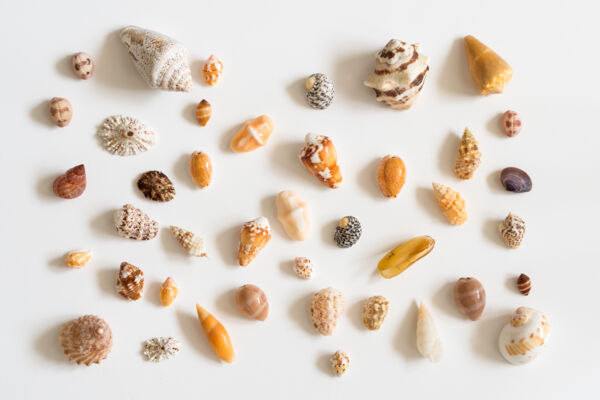
Four varieties of starfish are common to the Turks and Caicos: the large and red cushion sea star, the smaller red thorny starfish which is typically found in sheltered coves and tidal areas, the small gray two-spined sea star which is found in shallow sandy coves such as Taylor Bay, and the spider-like brittle star, which hides under rocks and reefs.
Keep in mind that starfish are living animals, and it’s illegal to harm them or take them without proper written approval from the Department of Environment and Maritime Affairs. Removing starfish from the ocean will kill them.
Terrestrial Snail Shells
There are a few varieties of land snails that can be found in the Turks and Caicos, and these terrestrial gastropods produce shells, which can be found across the country.
The native varieties of snails feature small white spiral shells, which may have black or brown accents. Typically, the Turks and Caicos land snail shells aren’t quite as robust as their marine counterparts.
A larger type of snail, introduced to the country with landscaping imports, produces a brown shell and can be found in developed areas.
Flotsam Beachcombing
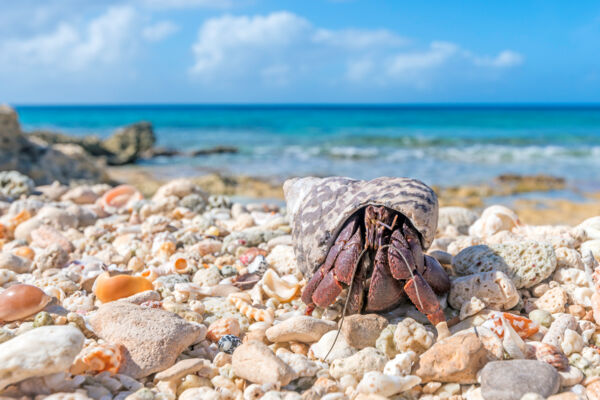
An environmentally conscious alternative to collecting seashells is flotsam and jetsam beachcombing. You’ll never know what you may find on some of our less-traveled coastlines. Low tide is of course the best time for beachcombing.
There’s a fascinating variety of objects, including bottles of every design and vintage, fishing net floats made from plastic, aluminum, and glass, boat and aircraft parts, and intricate driftwood.
Messages in a Bottle
On many of the more-remote coastlines in the Turks and Caicos, it’s actually quite common to find the classic message in a bottle. Typically, these communications offer salutations and a request for the letter to be forwarded onward to continue its journey.
Senders often make the critical mistake of not sealing the bottle properly, so the paper inside is usually damp and decayed. Due to the Subtropical Gyre and the North Equatorial Current, most bottles originated either from the southeast United States or southwest Europe.
Sea Glass
Sea glass, which is broken bits of glass that have been rounded and polished by the actions of the ocean and sand, can be found in a wonderful array of colors.
Green and brown colors are the most common (beer bottles!), with clear being the next most common. Blues and purples can also be found. Red and orange, largely from vintage signal lights, are by far the rarest.
The best place to find sea glass is either where bottles collect and break, such as rocky coves, or where bottles have been dumped, such as at docks and harbors.
Several local artists incorporate sea glass into jewelry, and a great place to see these crafts are at the shopping complexes of the Saltmills and Regent Village.
Seashells for Sale
Shells can often be found for sale at gift shops and craft markets throughout the Turks and Caicos. In the majority of cases, these are imported items from the Pacific or from other destinations in the Caribbean.
A major consideration when purchasing these products is environmental concerns. In many cases, these are unsustainably collected.
There are occasionally local shells for sale in shops. However, except for the conch, the Turks and Caicos does not legally support harvesting and exporting seashells, and any such items for sale are not condoned by the government and may be seized.



